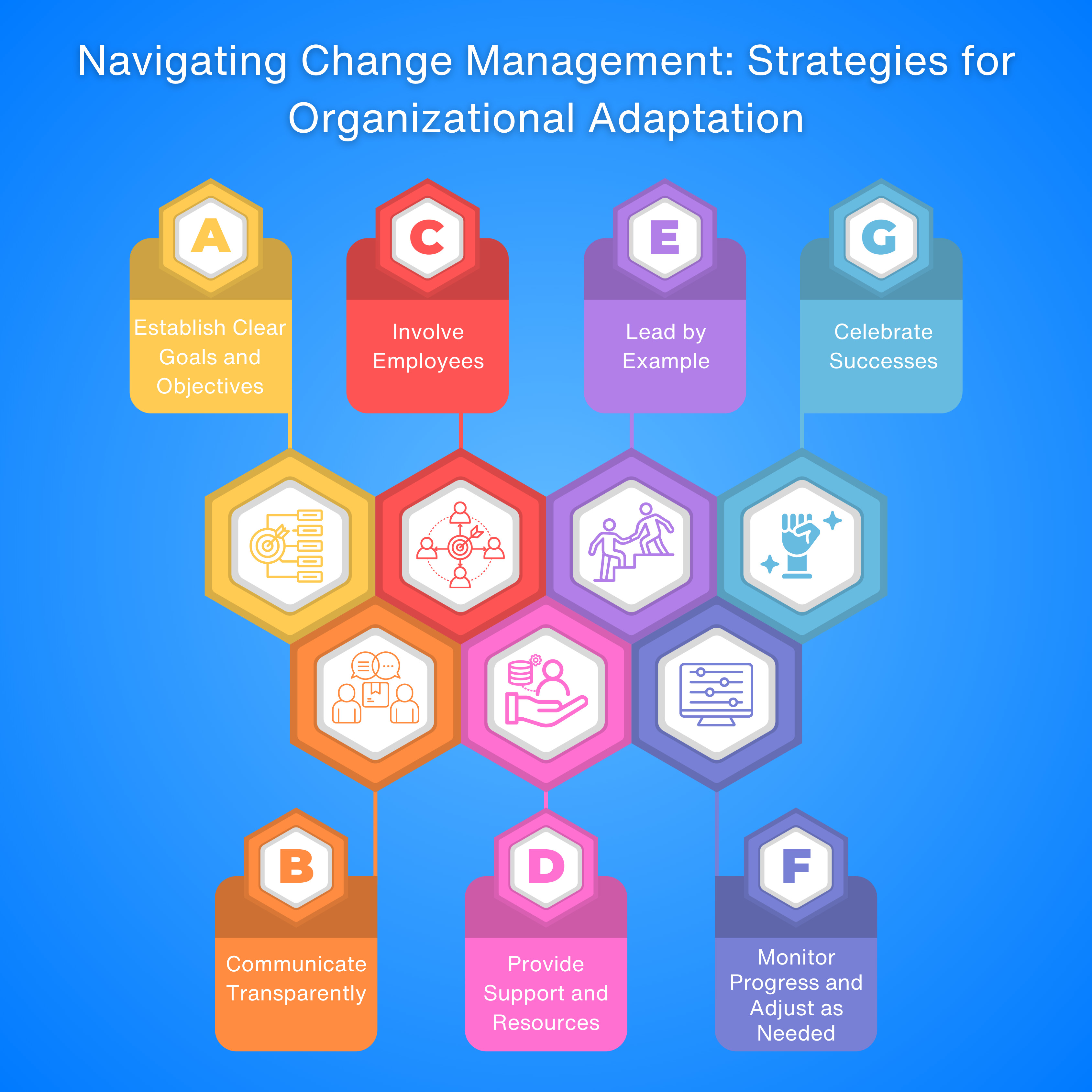Navigating Change Management: Strategies for Organizational Adaptation | #performance management system
Title: Navigating Change Management: Strategies for Organizational Adaptation
Change is an inevitable part of organizational life. Whether it's due to market shifts, technological advancements, mergers, or internal restructuring, organizations must adapt to survive and thrive in today's dynamic environment. However, managing change effectively is often easier said than done. It requires careful planning, effective communication, and strong leadership to guide employees through periods of uncertainty and transition. In this blog, we'll explore some strategies for navigating change management and ensuring successful organizational adaptation.
Establish Clear Goals and Objectives: Before embarking on any change initiative, it's essential to define clear goals and objectives. What are you trying to achieve with this change? How will you measure success? By establishing clear criteria for success upfront, you can keep the organization focused and aligned throughout the change process.
Communicate Transparently: Communication is key during times of change. Employees need to understand why change is happening, what it means for them, and how it will be implemented. Be transparent about the reasons behind the change and address any concerns or uncertainties openly. Regular updates and opportunities for feedback can help alleviate anxiety and build trust among employees.
Involve Employees: Change is more likely to be embraced when employees feel involved and empowered in the process. Solicit input from frontline staff, middle managers, and other stakeholders affected by the change. Encourage participation in decision-making and problem-solving, and provide opportunities for training and skill development to support employees through the transition.
Provide Support and Resources: Change can be stressful, so it's essential to provide support and resources to help employees cope. This could include training programs, coaching services, or access to counseling and wellness resources. Be proactive in addressing concerns and providing assistance where needed to ensure that employees feel supported throughout the change process.
Lead by Example: Effective leadership is crucial during times of change. Leaders should model the behavior they want to see in others, demonstrating resilience, adaptability, and a positive attitude towards change. By leading by example, managers can inspire confidence and motivate employees to embrace new ways of working.
Monitor Progress and Adjust as Needed: Change is rarely a linear process, and it's essential to monitor progress closely and be prepared to adjust course as needed. Regularly evaluate the effectiveness of change initiatives against established goals and objectives, and be willing to make changes to your approach if something isn't working. Flexibility and agility are key to successful change management.
Celebrate Successes: Finally, don't forget to celebrate successes along the way. Recognize and reward achievements, both big and small, to acknowledge the hard work and dedication of employees during the change process. Celebrating milestones can help maintain morale and momentum as the organization continues to adapt and evolve.
In conclusion, change management is a critical skill for today's organizational leaders. By following these strategies and approaches, organizations can navigate change effectively and ensure successful adaptation in an ever-changing business landscape. By establishing clear goals, communicating transparently, involving employees, providing support, leading by example, monitoring progress, and celebrating successes, organizations can create a culture that embraces change and thrives in the face of uncertainty.
Visit us on https://trackhrapp.com/



